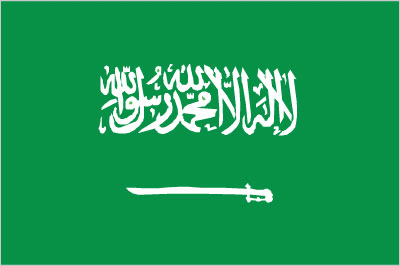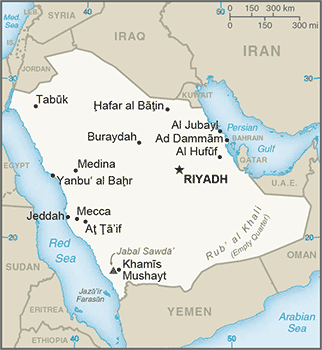Importing from Saudi Arabia


Saudi Arabia Country Profile
Official Name (Local Language) Al Mamlakah al Arabiyah as Suudiyah
Capital Riyadh
Population 28,160,273
Currency Saudi Riyal
GDP $637.8 billion
Languages Arabic
Phone Dial In 966
Saudi Arabia Exports Profile
Exports ($m USD) 207,572
Number of Export Products 3,352
Number of Export Partners 162

Saudi Arabia Economic Statistics
Government Website | https://www.saudi.gov.sa/ |
| Sovereign Ratings | https://countryeconomy.com/ratings/saudi-arabia |
| Central Bank | Saudi Arabian Monetary Authority |
| Currency USD Exchange Rate | 3.75 |
| Unemployment Rate | 11.2% |
| Population below poverty line | NA |
| Inflation Rate | 4.4 |
| Prime Lending Rate | 2.5% |
| GDP | $637.8 billion |
| GDP Pro Capita (PPP) | $54,100 |
| Currency Name | Saudi Riyal |
| Currency Code | SAR |
| World Bank Classification | High Income |
| Competitive Industrial Performance | 29/138 |
| Corruption Perceptions Index | 57/180 |
| Ease of Doing Business | 92/190 |
| Enabling Trade Index | 67/136 |
Access trade, receivables and supply chain finance
We assist companies to access trade and receivables finance through our relationships with 270+ banks, funds and alternative finance houses.
Get StartedImporting from Saudi Arabia
Saudi Arabia is the largest economy in the Middle East and the richest Arab country, as well as the fifth largest export economy in the world. Saudi Arabia’s main export is oil, which makes up about 80% of all export value; other significant exports are chemical products, mainly fertilisers, and plastics. Its economy is almost entirely based on oil: it is the world’s main producer and exporter of petroleum products, and acts as the second largest oil producer after Russia. It has a sizable and steady trade surplus, but growth has been slowly decreasing due to oil production cuts in recent years. However, the government’s focus on diversification is paying off, with steady non-oil growth driven by the healthcare, insurance, and tourism industries.
The government has been focused on fostering non-oil development, and has enacted a number of business-friendly measures as a result, including a new set of laws that protect investors’ rights and reduce the cost of doing business. Its ambitious development program, Vision 2030, includes measures to make the economy more environmentally friendly as well as boost the financial sector. Normalisation of relations with Iran in 2023 and growing cooperation and investment from China on the energy and infrastructure sectors could see it at odds with the West, perhaps antagonising traditional allies like the US.
Saudi Arabia is ruled by the King, Crown Prince, and Council of Ministers, and has Islam as the central religion and basis for all laws. Domestically, Saudi Arabia is one of the most stable countries in the region, with little internal unrest and no significant protests in recent memory. It consistently ranks well in Fragile States and political stability indexes and has a medium-low corruption score, making it one of the most attractive countries in the region for exporters and investors.
Importing from Saudi Arabia: What is trade finance?
Saudi Arabia is the largest economy in the Middle East and the richest Arab country. The policy of large-scale public works undertaken by the Government, as well as foreign direct investment and the soundness of the banking and financial system, have enabled the country to become the number one regional economy and one of the largest in the world. However, the economy of Saudi Arabia is almost entirely based on oil. GDP growth has been gradually declining since 2015 to a point where the economy moved into a recession in 2017 (-0.5%).
Chart Showing GDP Growth Compared to rest of world
GDP Composition for Saudi Arabia
Agriculture
2.4%
Wheat, barley, tomatoes, melons, dates, citrus; mutton, chickens, eggs, milk
Industry
42.9%
Crude oil production, petroleum refining, basic petrochemicals, ammonia, industrial gases, sodium hydroxide (caustic soda), cement, fertilizer, plastics, metals, commercial ship repair, commercial aircraft repair, construction
Services
54.7%
Map
Top 5 Exports Partners
| Country | Trade | % Partner Share |
| Unspecified | 164,154 | 79.08 |
| United Arab Emirates | 6,567 | 3.16 |
| India | 2,458 | 1.18 |
| Singapore | 2,219 | 1.07 |
Top 5 Exports Products
| Export Product | Number |
| Petroleum oils and oils obtained from bituminou | 65.6% |
| Petroleum oils, etc, (excl. crude); preparation | 11.4% |
| Polypropylene, in primary forms | 3.9% |
| Polyethylene having a specific gravity >=0.94, | 2.1% |
| Polyethylene having a specific gravity <0.94, i | 1.8% |
Local Partners
- All Topics
- Philippines Trade Resources
- Export Finance and ECA Topics
- Local Conferences



















